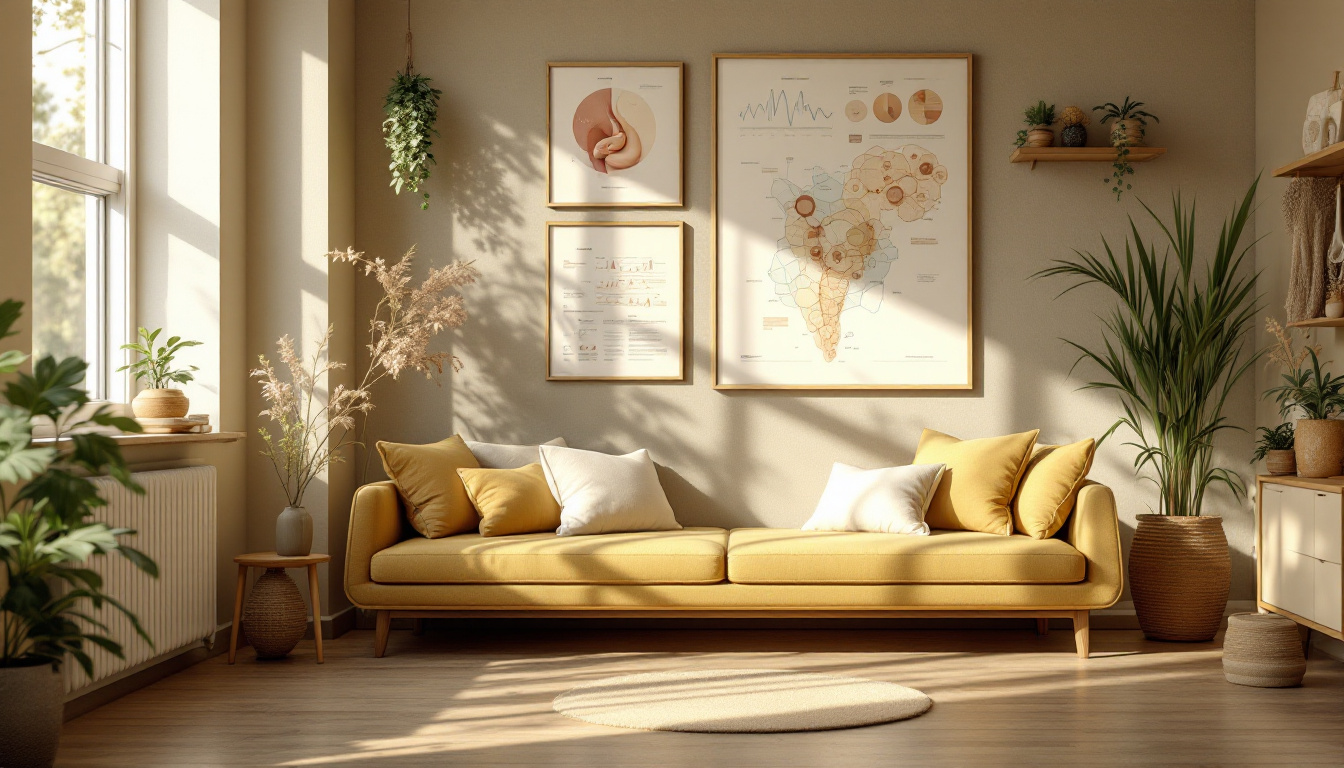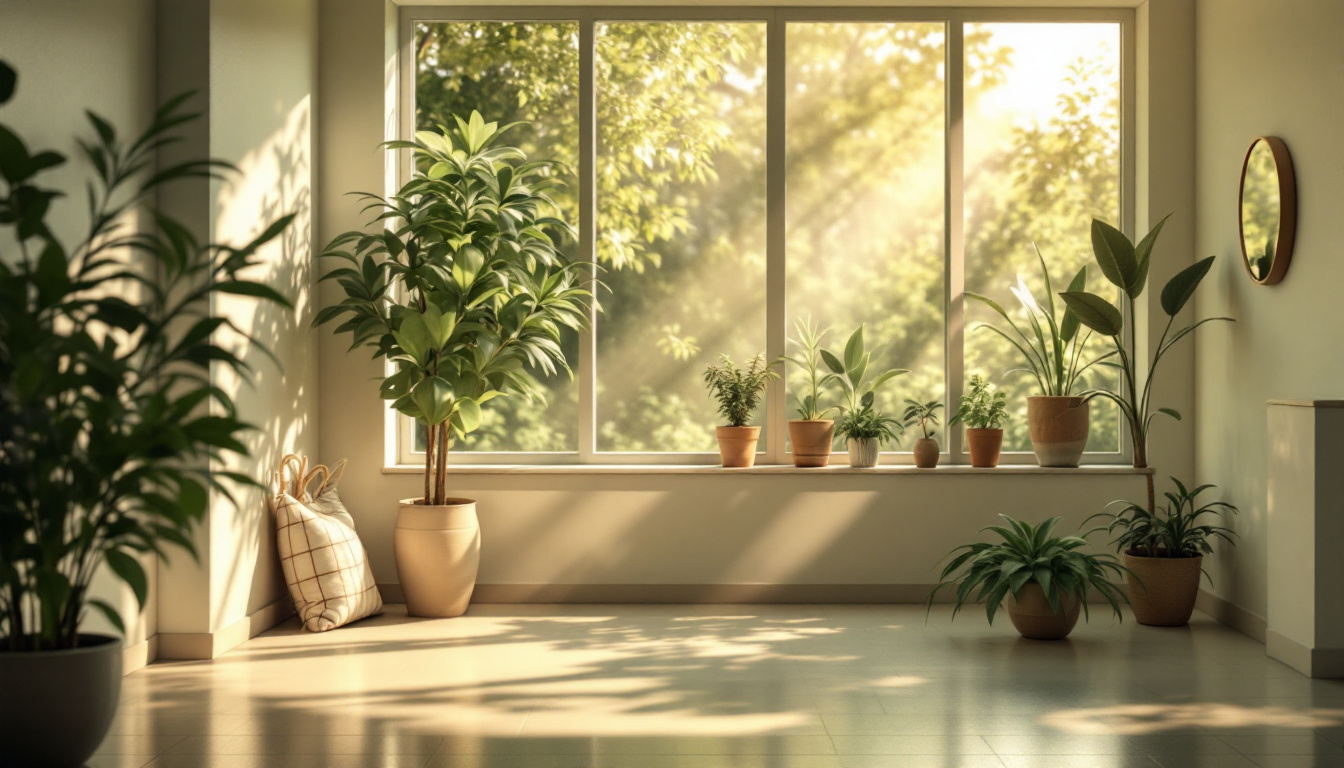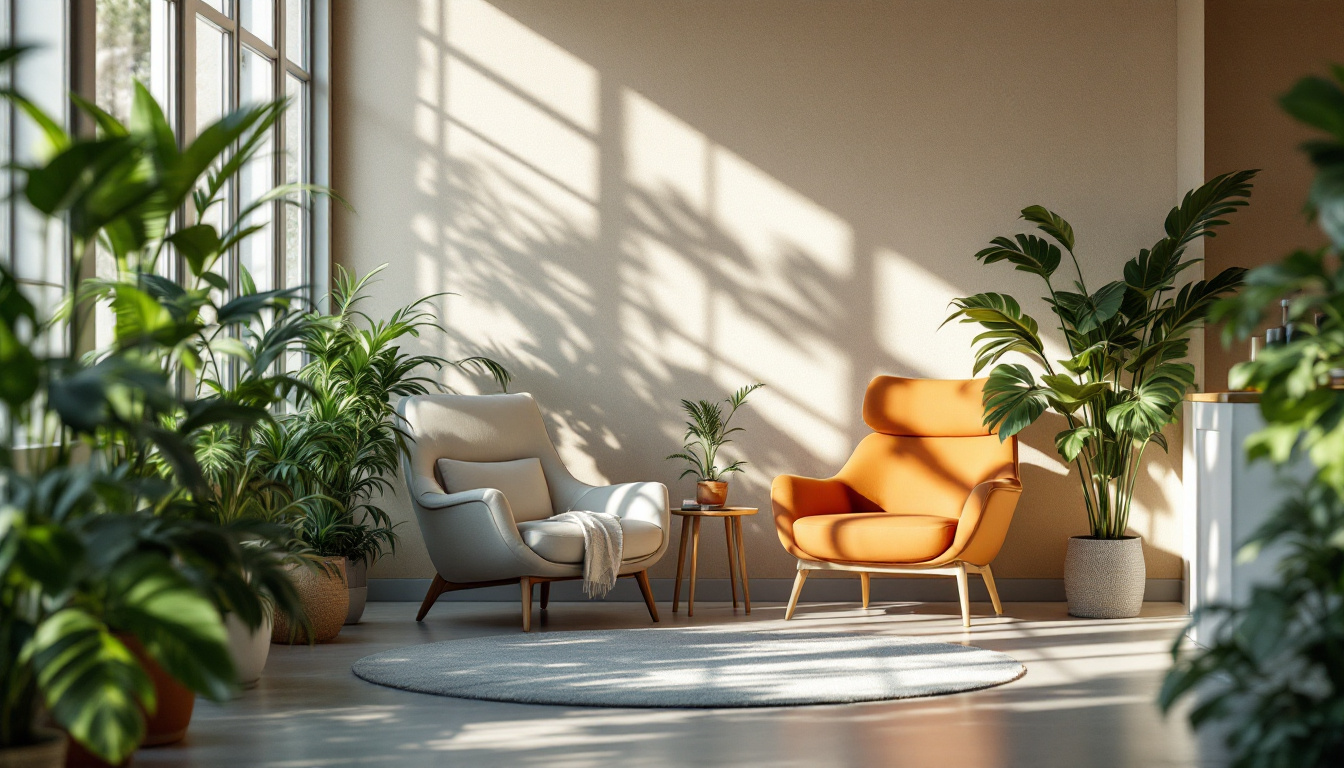How to Create a Calming Space for Meditation and Relaxation
Crafting Your Personal Tranquility Zone

Introduction to Building a Meditation Sanctuary
Creating a calming space for meditation and relaxation can transform not just your environment but your mental well-being. Whether you have a vast area or just a corner in a small room, there are several ways to curate a dedicated meditation space. This guide delves into practical ideas and tips to help you design a serene setting that enhances your meditation practice and invites relaxation.
Selecting the Perfect Spot

What are essential steps for designing a meditation space at home?
To design a meditation space at home, start by choosing a quiet, peaceful area free from distractions and noise. Even a small corner can work if it feels calming to you. It’s essential to avoid high-traffic areas where disturbances are likely. Clean the space to promote a sense of freshness; a tidy environment enhances focus and tranquility during mediation practice. Consider using sacred smoke like Palo Santo or Sage to smudge the area, which can also aid in cleaning the energy of the space.
Decorate with elements that enhance relaxation, such as comfortable cushions, portable seating, plants, or calming artwork that resonates with positive vibes. Personal touches like cherished mementos or meaningful quotes can create an inviting atmosphere and promote a deeper connection to your meditative practice. Also, ensure that the space has adequate lighting, possibly with candles or soft lamps, to create a warm and inviting atmosphere for your practice.
Why is it important to maintain quietness?
Maintaining quietness in your meditation space is vital for fostering a meditation-friendly environment. A serene space allows practitioners to focus their thoughts and minimize distractions. Consider soundproofing materials or ambient sounds like soft music or nature recordings to elevate the ambiance. By establishing clear boundaries and reducing external noise, you create a calm sanctuary suitable for deep reflection and grounding.
How does having a dedicated space enhance meditation practice?
A dedicated meditation space serves as a mental anchor for your practice, signaling to your brain that it's time to relax and go within. Regular use of the same space can build familiarity, leading to an enriched experience of mindfulness and meditation. Importantly, it promotes consistency, which is instrumental in enhancing awareness and reducing stress levels.
Enhancing Comfort and Wellness

How can you create a calming meditation space?
To create a calming meditation space, start by choosing a dedicated area in your home. This could be a small nook or even a closet where you can find tranquility. Comfort is paramount, so it’s essential to include soft textures.
Cushions, blankets, and rugs can create a welcoming atmosphere, allowing you to relax and focus during meditation.
Essential oils or scented candles can introduce soothing aromas, further enhancing relaxation. For example:
| Aroma | Benefits |
|---|---|
| Lavender | Promotes relaxation |
| Citrus | Boosts creativity |
| Frankincense | Encourages calmness |
What role do lighting and ambiance play?
Natural light is highly beneficial; position your meditation area near windows if possible. Soft ambient lighting, such as lamps or candles, is perfect for evening sessions.
Maintaining a clean and uncluttered space is crucial. Studies show clutter can increase stress levels, making it challenging to focus.
Finally, integrating natural elements like plants not only beautifies your space but also brings a sense of balance and connection to nature. A well-ventilated environment is ideal, as fresh air contributes to mental clarity.
By personalizing your meditation space, you create a unique retreat that enhances both comfort and wellness, making each practice more effective.
Creating a Meditation Space Without Personal Associations
How to make a meditation spot with no specific associations?
Creating a meditation spot devoid of personal associations can foster a calming and universally inviting atmosphere. Aim to establish a serene environment focusing on relaxation rather than personal memories.
Object Selection
- Neutral Decor: Utilize items like soft pillows, neutral-toned rugs, and calming artwork. Consider elements such as nature prints or mandalas that evoke tranquility without personal connections.
- Relaxing Elements: Incorporate soothing scents and sounds, such as essential oil diffusers with lavender or a singing bowl, to create a peaceful ambiance.
Neutral Decoration:
- Color Palette: Soft pastel colors can contribute to a relaxing vibe. Choose wall colors or decorative accents that promote calmness, steering clear of vibrant or overly stimulating hues.
- Simplicity: Maintain minimal clutter with a few carefully curated pieces. This allows the space to feel open and spacious.
Fostering a Universal Vibe:
- Nature's Touch: Integrate elements like potted plants or flowers to connect with nature, which enhances the sense of peace and serenity.
- Image Choices: Choose symbols like a Shri Yantra or abstract art to maintain a neutral yet calming aesthetic, inviting stillness and reflection.
Designing for Beginners

How can beginners set up a meditation space?
Beginners can embark on their meditation journey by carefully choosing a quiet corner in their home. This space should feel personal and inviting, allowing for an easy retreat from the hustle and bustle of daily life.
To enhance this area, it’s beneficial to gather around five comforting objects that evoke feelings of calm. These might include:
- Candles that provide soft lighting and soothing scents.
- Plants which can purify the air and bring in a touch of nature.
- Personal memorabilia, such as photos or mementos that have special meaning.
Comfort is essential, so incorporating proper seating is critical. Whether one opts for meditation cushions, a comfortable chair, or even a soft rug to sit on, the goal is to allow the body to relax during practice.
Moreover, a tranquil atmosphere can be fostered through soft color schemes, opting for pastels or earthy tones that can aid relaxation. Keeping the area free from clutter minimizes distractions, making it easier for the mind to focus.
For an added layer of comfort, consider incorporating gentle sounds—like nature recordings or soft music—to enhance the serene environment. Overall, a personalized meditation space not only encourages regular practice but can also significantly boost the effectiveness and enjoyment of meditation.
Budget-Friendly Meditation Room Ideas

What are some meditation room ideas for those on a budget?
Creating a meditation space without breaking the bank is totally achievable. Start by identifying a quiet corner in your home, perhaps a nook often overlooked, where peace can reign. Light colors like pale blue or soft green can transform the space and create a soothing backdrop for your practice.
Economical decor solutions
- Wall Colors: Choose paints that evoke tranquility. Look for discount paint options or consider a DIY solution like a calming mural.
- Soft Furnishings: Incorporate plush cushions and a cozy throw blanket to enhance comfort. If you don’t have cushions specifically for meditation, repurpose soft pillows or blankets you already own.
- Natural Elements: Add a couple of houseplants or even stones to your space. Plants not only purify the air but also promote a sense of calm at practically no cost.
Repurposing home items
- Furniture: Think creatively about the furniture you already have. An old bench can serve as seating, while a small table can hold candles or an inspirational book.
- Artwork: Use personal photos or DIY artwork to fill the wall space. You might even create a vision board that reflects your meditation intentions.
Unique yet affordable touches
- Pleasant Scents: Scented candles and incense are affordable ways to enhance the ambiance. They help create an inviting and relaxing environment without significant expense.
- Ambient Sound: Consider a simple sound machine or a playlist of nature sounds to foster a serene atmosphere. Many apps provide free options specifically designed to aid relaxation.
- Personalization: Finish your setup with meaningful quotes, trinkets, or mementos that resonate with your meditation journey. This personal touch can make your meditation area feel special and sacred.
By combining these elements thoughtfully, you can cultivate a comfortable and inviting meditation space that encourages mindfulness, all while staying budget-friendly.
Incorporating a Meditation Space in Small Rooms

How can you incorporate a meditation space in a small room?
To create a meditation space in a small room, focus on making the most of your limited area. Begin by selecting a calm corner that is free from clutter, allowing you to designate it specifically for your meditation practice. Soft colors, like light blue or green on the walls, can evoke tranquility and stability, setting the right mood for relaxation.
Space-saving designs and efficient use of small areas
Using versatile furniture is essential in small spaces. Opt for soft furnishings such as cushions or beanbags that can be easily stored when not in use. A meditation cushion or a yoga mat can serve dual purposes, offering comfort during practice while being lightweight enough to tuck away. Additionally, wall-shelves can hold your essential meditation items without taking up valuable floor space.
Personal and cozy setups
Incorporating natural elements like houseplants can breathe life into your meditation area, purifying the air and creating a grounding atmosphere. Soft, diffused lighting—such as fairy lights or lamps with warm tones—enhances the serene ambiance. Personalization adds warmth; consider decorations like fragrant candles, small sculptures, or inspirational quotes. These items can create an inviting sanctuary where you can connect deeply with your meditation practice.
Bedroom Meditation Space Innovations
What are some creative ideas for setting up a meditation space in a bedroom?
Creating a meditation space in your bedroom can be a simple yet transformative experience. Begin by selecting a quiet corner or area where distractions are minimal. A small stool or a stack of cushions can serve as an inviting seat, allowing for comfort during your practice.
Lighting and color considerations
Pay attention to the lighting in your chosen space. Natural light is ideal, so set your meditation area near a window to benefit from daylight. In the evenings, opt for soft ambient lighting using lamps or candles to create a soothing mood. Color also plays a vital role; soft pastels such as light greens or blues can promote a calming atmosphere, which is ideal for meditation.
Blending with existing decor
Personalization is key when designing this space. Incorporate meaningful items, like a Buddha statue or scented candles, that resonate with your journey. Adding some greenery, such as small potted plants, not only enhances visual appeal but also purifies the air. Ensure that the area remains clean and uncluttered, helping to maintain a tranquil environment conducive to mindfulness. Incorporating pillows and blankets can further enhance comfort, making this spot a cozy refuge for meditation.
Essentials to Elevate Your Meditation Experience
What tools and elements enhance meditation spaces?
To create a thoughtful meditation space, consider incorporating the following tools and elements:
- Comfortable Seating: Use meditation cushions, chairs, or bean bags to support proper posture.
- Personal Items: Include calming decor, a focal point like a candle or statue, and cherished photographs that resonate emotionally.
- Sound Elements: Sound machines or playlists with nature sounds can help drown out distractions and promote tranquility.
How do natural elements influence meditation?
Incorporating plants into your space can create a grounding atmosphere, purifying the air and evoking a sense of peace.
- Natural Light: Position your meditation area near windows to benefit from fresh air and sunlight, fostering a warm environment for reflection.
- Textures and Materials: Use soft textiles like rugs or blankets to enhance tactile comfort during sessions.
What impact does ambiance have on meditation?
Creating the right ambiance is crucial:
- Lighting and Color: Opt for soft lighting and pastel colors to evoke calmness.
- Scents: Aromatherapy using essential oils or incense can set a relaxing tone, enhancing the overall experience.
| Element | Details | Purpose |
|---|---|---|
| Comfortable Seating | Cushions, bean bags, or chairs | Improves posture and focus |
| Natural Elements | Plants, flowers, natural light | Promotes serenity |
| Sound Elements | Calming music, nature sounds | Reduces distractions |
| Aromatherapy | Essential oils, incense | Enhances relaxation |
Bringing Peace Into Your Practice
A dedicated meditation space can significantly enhance your practice by offering a tranquil and focused environment for relaxation and mindfulness. By considering key aspects of comfort, personalization, and atmosphere, you can create a sanctuary that invites peace and healing. Regardless of space or budget constraints, the possibilities are endless for crafting your own meditation retreat. Carry these insights into your own home for a calming experience that nurtures both body and mind.
References
- How to Create a Meditation Space - Lion's Roar
- How to create a meditation room: 6 ideas to DIY your space - Calm
- How To Create A Small Space Meditation Corner - The Good Trade
- 10 Meditation Spaces That Will Inspire You to Create Your Own
- Jeremiah Brent Shares 6 Things Every Meditation Room Needs
- Creating a Meditation Space for Your Home - AARP
- Meditation Room Design: How to Create a Five-Senses Experience
- Creating a Meditation Space at Home: Essentials and Inspiration
































































































